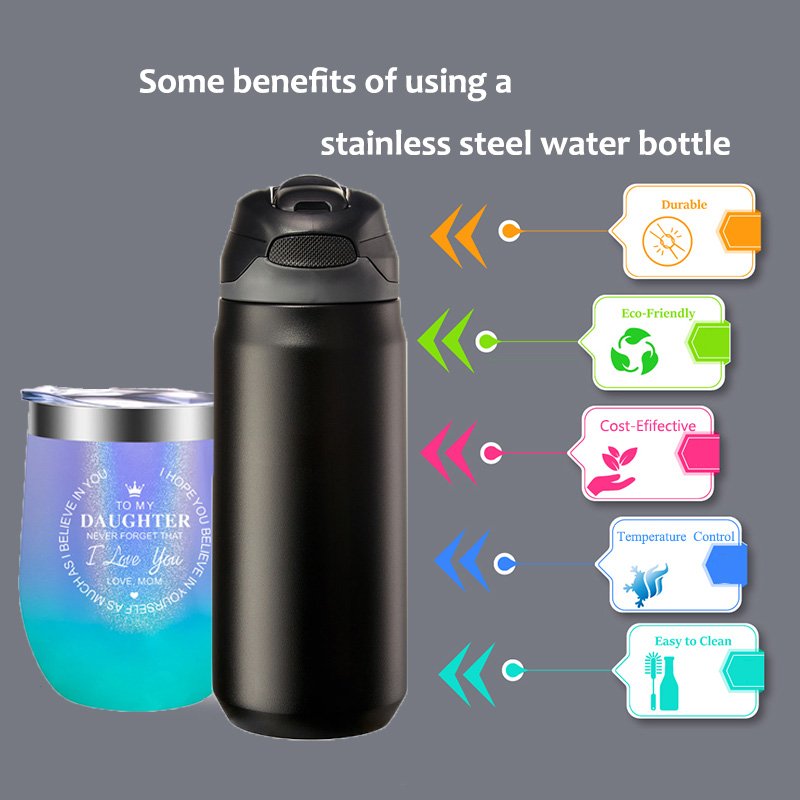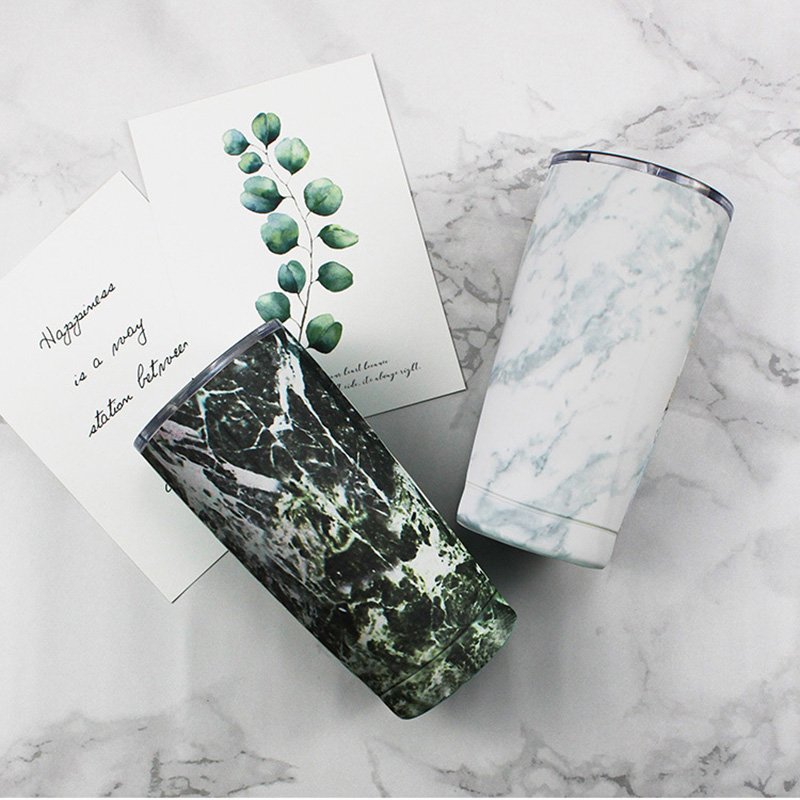Introduction to Tumblers and Coffee Cups
Tumblers and coffee cups are ubiquitous in our daily lives, each serving a unique function in the realm of beverage consumption. A tumbler is a versatile drinking vessel, typically cylindrical in shape, without a handle, and can be used for various types of drinks, both hot and cold. Coffee cups, on the other hand, are specifically designed for hot beverages, most notably coffee, and usually feature a handle to protect the drinker from the heat.
The history of these drinking vessels stretches back centuries. Tumblers have roots in ancient civilizations, where they were initially made from materials like wood and metal. Over time, they have evolved into contemporary designs made from glass, plastic, and stainless steel, reflecting advancements in materials and technology. Coffee cups have a similarly rich history, tracing back to the introduction of coffee to Europe from the Middle East in the 16th century. Traditionally made from ceramic, they have also adapted to modern needs with the introduction of insulated and travel-friendly versions.
Understanding the evolution of tumblers and coffee cups offers insight into their current forms and functions. Tumblers, with their versatile and often portable designs, cater to a wide array of beverage preferences and lifestyles. Coffee cups, on the other hand, are more specialized, designed to enhance the coffee-drinking experience through considerations of temperature maintenance, ergonomic design, and aesthetic appeal.
As we delve deeper into the differences between tumblers and coffee cups, it is essential to appreciate their historical contexts and the specific needs they fulfill. This foundational understanding will pave the way for a more detailed exploration of their distinct features and the unique advantages each offers.
Design and Material Differences
When comparing tumblers and coffee cups, the differences in design and materials are pivotal to their usability. A tumbler is typically constructed from materials like stainless steel, plastic, or glass, each offering distinct advantages. Stainless steel tumblers are renowned for their durability and insulation capabilities, effectively maintaining the temperature of beverages for extended periods. Plastic tumblers, while lightweight and often more affordable, may lack the robustness and thermal efficiency of their stainless steel counterparts. Glass tumblers provide a sleek, modern aesthetic but are more susceptible to breakage and may require careful handling.
On the other hand, coffee cups are predominantly made from ceramic, although options in glass and sometimes stainless steel are available. Ceramic coffee cups are highly favored for their heat retention properties and the absence of metallic taste, offering a more traditional and satisfying drinking experience. Glass coffee cups share a similar heat retention quality but, as with glass tumblers, they are fragile. Stainless steel coffee cups, though less common, provide excellent insulation and durability, making them ideal for on-the-go use.
Design-wise, tumblers are generally taller and feature a more cylindrical shape, optimized for portability and ease of storage in car cup holders. They often come with lids that prevent spills, making them suitable for travel. Many tumblers also incorporate double-wall insulation, enhancing their ability to keep beverages hot or cold for longer periods.
Conversely, coffee cups usually have a more open design with a handle, facilitating a comfortable grip. The open top design allows for the immediate release of steam, which is particularly beneficial for hot beverages. While some coffee cups come with lids, they are typically not as secure as those found on tumblers, reflecting their primary use in stationary settings like homes or cafes.
In summary, the choice between a tumbler and a coffee cup largely depends on the intended use. Tumblers excel in portability and insulation, making them ideal for travel, whereas coffee cups offer a more traditional and often more aesthetically pleasing experience, suited for leisurely enjoyment. Understanding these design and material differences can help individuals select the most appropriate vessel for their beverage needs.
Functionality and Use Cases
Tumblers and coffee cups serve distinct purposes, each tailored to specific user needs and scenarios. Understanding their functionality and use cases can help you determine which is suitable for various situations. Whether at home, in the office, or on the go, the choice between a tumbler and a coffee cup can significantly impact your drinking experience.
At home, coffee cups are a staple. They are typically designed to hold hot beverages, such as coffee, tea, and hot chocolate. Their open-top design allows for easy sipping and the release of steam, making them ideal for leisurely consumption. Coffee cups are often made of ceramic or glass, materials that offer good heat retention for short periods and provide a pleasant drinking experience. They are perfect for those who enjoy their morning brew in a relaxed setting, perhaps while reading a book or catching up on news.
In contrast, tumblers are designed for versatility and portability. Made from materials like stainless steel or plastic, they are equipped with lids that prevent spills, making them ideal for on-the-go use. Tumblers excel in keeping beverages at their desired temperature for extended periods, thanks to their insulation properties. Whether you prefer a steaming hot coffee during your morning commute or an iced beverage on a hot day, a tumbler can maintain the temperature effectively. This makes tumblers a popular choice among commuters, travelers, and busy professionals who need their drinks to stay fresh for longer durations.
In the office, both tumblers and coffee cups find their place. Coffee cups are often used for quick coffee breaks, while tumblers are favored for long meetings or work sessions, where maintaining beverage temperature is crucial. Tumblers also offer the added benefit of reducing the need for frequent refills, as they generally have a larger capacity than standard coffee cups.
Ultimately, the choice between a tumbler and a coffee cup depends on individual preferences and specific use cases. Some may prefer the classic feel of a coffee cup, while others may opt for the practical benefits of a tumbler. By understanding the functionality and applications of each, you can make an informed decision that best suits your lifestyle and beverage habits.
Environmental Impact and Sustainability
When considering the environmental impact and sustainability of tumblers versus coffee cups, several factors come into play. The materials used in manufacturing these items significantly affect their overall ecological footprint. Tumblers are often made from stainless steel, glass, or BPA-free plastic, which are durable and can be reused for many years. In contrast, disposable coffee cups are typically made from paper lined with a thin layer of plastic, making them difficult to recycle and often ending up in landfills.
Reusability is a crucial factor in reducing environmental impact. Tumblers, due to their durable construction, can be used repeatedly, thus minimizing waste. On the other hand, disposable coffee cups are designed for one-time use, contributing to a large amount of waste. By opting for a reusable tumbler, consumers can significantly decrease the number of single-use coffee cups they dispose of annually.
The manufacturing process also plays a critical role in the environmental footprint. Producing stainless steel or glass tumblers may require more resources and energy compared to paper coffee cups. However, the long-term benefits of reusability often outweigh the initial environmental costs. Conversely, the production of disposable coffee cups involves the continuous use of resources and energy, leading to a higher cumulative environmental impact over time.
To make more eco-friendly choices, consumers are encouraged to opt for reusable tumblers whenever possible. For those who must use disposable coffee cups, it is essential to properly recycle them if facilities are available. Choosing coffee shops that offer discounts for bringing a reusable tumbler can also incentivize sustainable practices. Additionally, supporting brands that prioritize sustainable materials and manufacturing processes can further mitigate the environmental impact.
In summary, the choice between a tumbler and a coffee cup has significant environmental implications. By understanding the sustainability of materials, potential for reuse, and overall environmental footprint, consumers can make informed decisions that align with their environmental values, ultimately contributing to a more sustainable future.




certainly like your website but you need to take a look at the spelling on quite a few of your posts Many of them are rife with spelling problems and I find it very troublesome to inform the reality nevertheless I will definitely come back again
Your blog is a beacon of light in the often murky waters of online content. Your thoughtful analysis and insightful commentary never fail to leave a lasting impression. Keep up the amazing work!
Your blog has become an indispensable resource for me. I’m always excited to see what new insights you have to offer. Thank you for consistently delivering top-notch content!
Ive read several just right stuff here Certainly price bookmarking for revisiting I wonder how a lot effort you place to create this kind of great informative website
The degree to which I admire your work is as substantial as your own enthusiasm. Your visual presentation is refined, and the material you’ve written is stylish. However, you seem apprehensive about potentially delivering something that may be viewed as questionable. I’m confident you’ll be able to address this issue promptly.
Great job site admin! You have made it look so easy talking about that topic, providing your readers some vital information. I would love to see more helpful articles like this, so please keep posting! I also have great posts about Airport Transfer, check out my weblog at YH6
маркетплейс аккаунтов продать аккаунт
магазин аккаунтов социальных сетей купить аккаунт
магазин аккаунтов перепродажа аккаунтов
биржа аккаунтов магазин аккаунтов
заработок на аккаунтах площадка для продажи аккаунтов
продажа аккаунтов соцсетей покупка аккаунтов
купить аккаунт магазин аккаунтов социальных сетей
магазин аккаунтов социальных сетей биржа аккаунтов
площадка для продажи аккаунтов площадка для продажи аккаунтов
аккаунт для рекламы https://marketplace-akkauntov-top.ru/
аккаунты с балансом магазин аккаунтов
биржа аккаунтов https://ploshadka-prodazha-akkauntov.ru/
магазин аккаунтов магазин аккаунтов
платформа для покупки аккаунтов площадка для продажи аккаунтов
магазин аккаунтов https://pokupka-akkauntov-online.ru/
Social media account marketplace Account Store
Sell accounts https://accountsmarketplacepro.com
Buy and Sell Accounts Account Selling Service
Account Trading Platform Account Store
Account Selling Platform Profitable Account Sales
Account Purchase Account Trading Platform
Account Trading Platform Buy and Sell Accounts
Profitable Account Sales Account marketplace
Purchase Ready-Made Accounts Account Exchange Service
Secure Account Purchasing Platform Account exchange
Purchase Ready-Made Accounts Buy Account
marketplace for ready-made accounts account selling service
account marketplace online account store
buy accounts account buying platform
account catalog buy accounts
account exchange buy accounts
secure account purchasing platform account trading platform
marketplace for ready-made accounts account catalog
account trading accounts for sale
ready-made accounts for sale buy pre-made account
account trading platform gaming account marketplace
find accounts for sale buy account
account market secure account purchasing platform
social media account marketplace marketplace for ready-made accounts
online account store marketplace for ready-made accounts
account selling service account trading platform
account market marketplace for ready-made accounts
verified accounts for sale buy pre-made account
gaming account marketplace account purchase
online account store secure account sales
buy pre-made account gaming account marketplace
ready-made accounts for sale buy account
gaming account marketplace guaranteed accounts
account selling platform account buying platform
account trading account trading platform
account trading platform secure account purchasing platform
accounts for sale gaming account marketplace
account trading service sell accounts
account acquisition verified accounts for sale
buy and sell accounts https://accounts-offer.org
account catalog accounts market
account trading https://buy-best-accounts.org
account exchange buy accounts
secure account sales accounts market
secure account sales accounts market
sell account https://buy-accounts.space
buy and sell accounts https://buy-accounts-shop.pro/
buy accounts https://social-accounts-marketplace.live
verified accounts for sale https://buy-accounts.live
account buying service https://accounts-marketplace.online
find accounts for sale https://accounts-marketplace-best.pro
маркетплейс аккаунтов https://akkaunty-na-prodazhu.pro
маркетплейс аккаунтов соцсетей https://rynok-akkauntov.top/
маркетплейс аккаунтов соцсетей магазины аккаунтов
маркетплейс аккаунтов соцсетей https://akkaunt-magazin.online
продать аккаунт https://akkaunty-market.live/
биржа аккаунтов https://kupit-akkaunty-market.xyz
площадка для продажи аккаунтов https://akkaunty-optom.live
маркетплейс аккаунтов соцсетей https://online-akkaunty-magazin.xyz
продать аккаунт akkaunty-dlya-prodazhi.pro
магазин аккаунтов https://kupit-akkaunt.online
buy accounts facebook buy old facebook account for ads
facebook ad account buy buy a facebook account
facebook accounts for sale https://buy-ad-account.top
buy facebook ad account https://buy-ads-account.click/
facebook ad accounts for sale buy facebook account for ads
facebook ad account buy buy facebook ad account
buy accounts facebook https://ad-account-for-sale.top/
cheap facebook advertising account https://buy-ad-account.click
buy facebook ads accounts buy fb ads account
buy aged google ads accounts https://buy-ads-account.top
google ads accounts buy google ads threshold accounts
buying facebook ad account https://buy-accounts.click
buy google adwords account buy verified google ads accounts
google ads accounts for sale https://ads-account-buy.work
google ads account seller https://buy-ads-invoice-account.top
buy old google ads account https://buy-account-ads.work/
buy adwords account buy-ads-agency-account.top
buy account google ads https://sell-ads-account.click
buy google ads accounts buy google adwords accounts
fb bussiness manager https://buy-business-manager.org
old google ads account for sale buy google ads invoice account
facebook business manager account buy https://buy-bm-account.org/
facebook bm for sale https://buy-business-manager-acc.org
buy bm facebook buy-verified-business-manager-account.org
buy verified facebook buy-verified-business-manager.org
fb bussiness manager https://business-manager-for-sale.org
buy facebook business manager accounts buy-business-manager-verified.org
facebook bm for sale https://buy-bm.org
buy facebook business manager verified verified-business-manager-for-sale.org
fb bussiness manager https://buy-business-manager-accounts.org/
tiktok ads account for sale https://buy-tiktok-ads-account.org
buy tiktok ads https://tiktok-ads-account-buy.org
tiktok ads account buy buy tiktok ads
tiktok ad accounts https://tiktok-agency-account-for-sale.org
tiktok agency account for sale https://buy-tiktok-ad-account.org
buy tiktok ad account https://buy-tiktok-ads-accounts.org
buy tiktok ad account https://buy-tiktok-ads.org
tiktok ads account buy https://buy-tiktok-business-account.org
buy tiktok ads accounts buy tiktok ads
buying fb accounts accounts market gaming account marketplace
buy facebook ads manager profitable account sales account trading platform